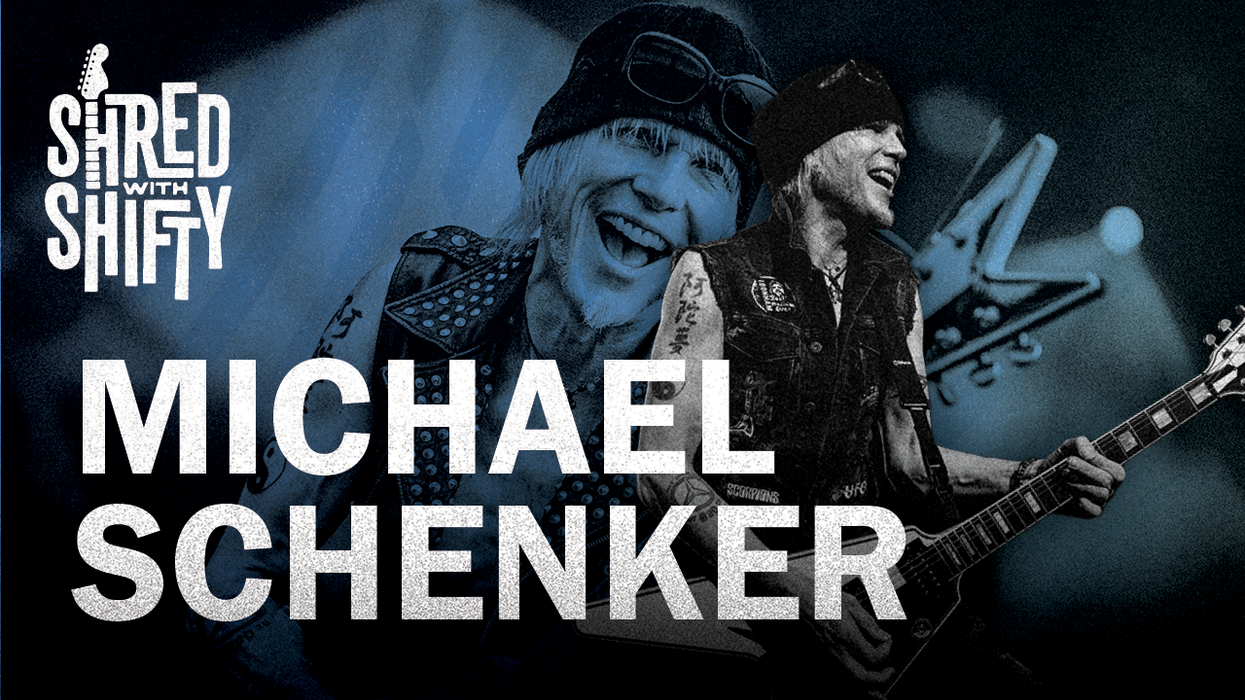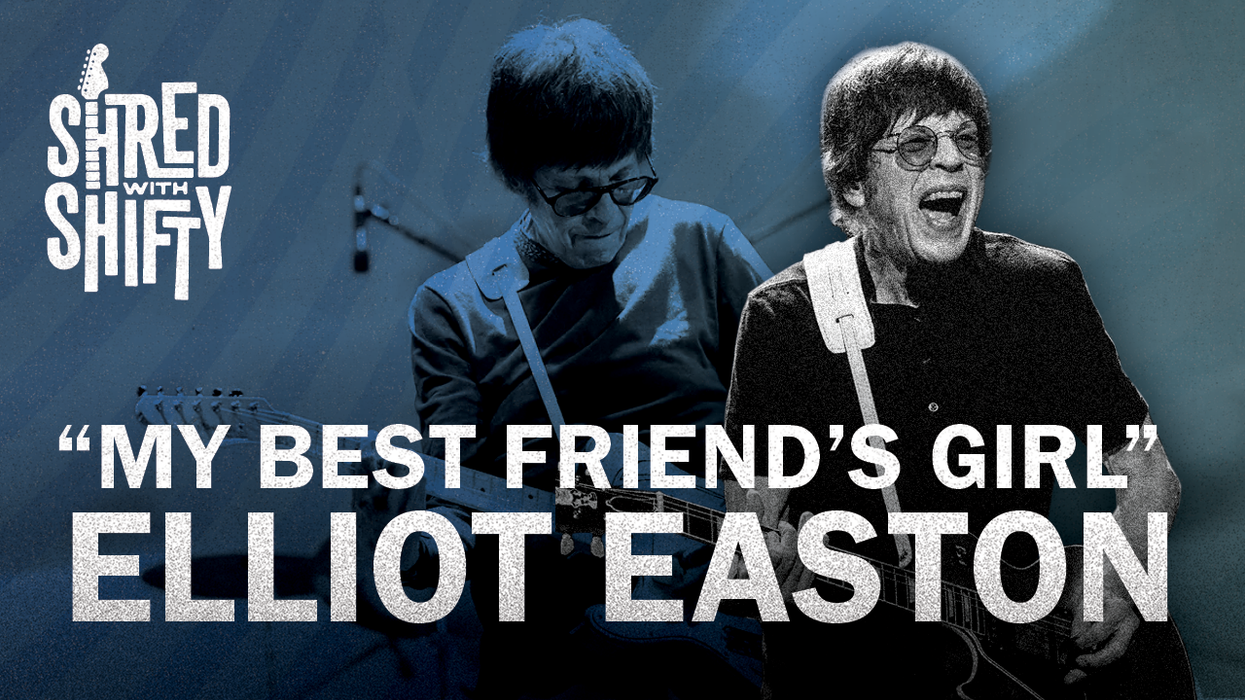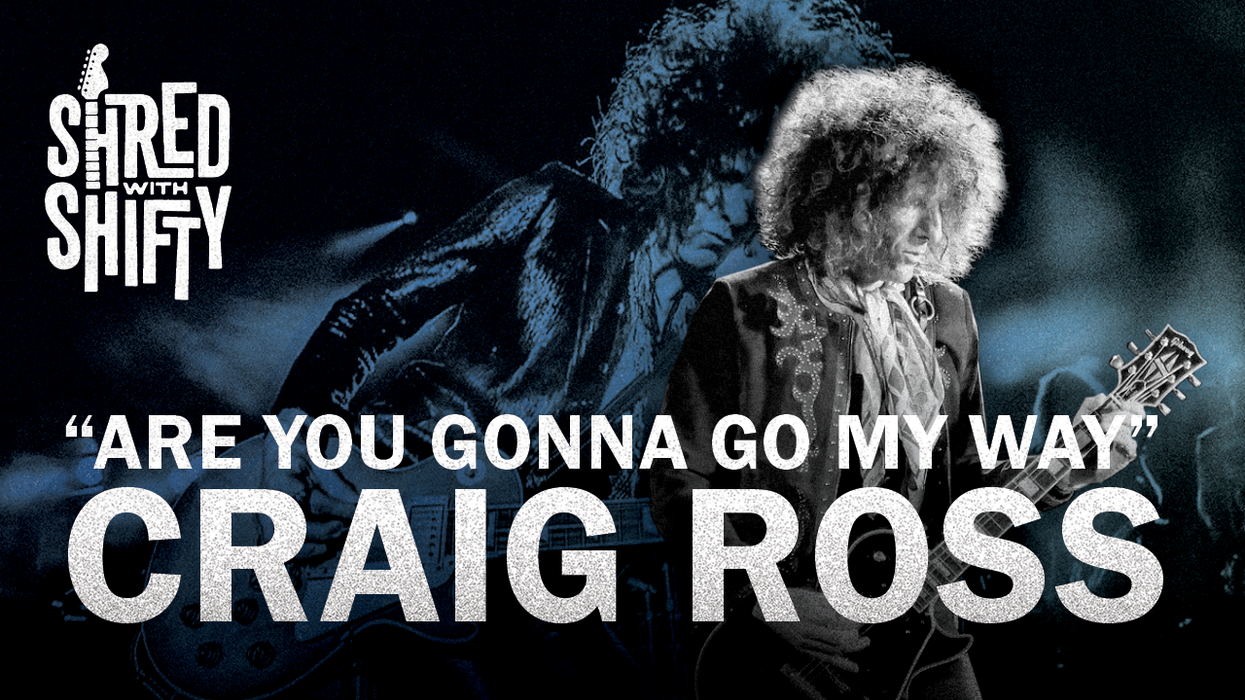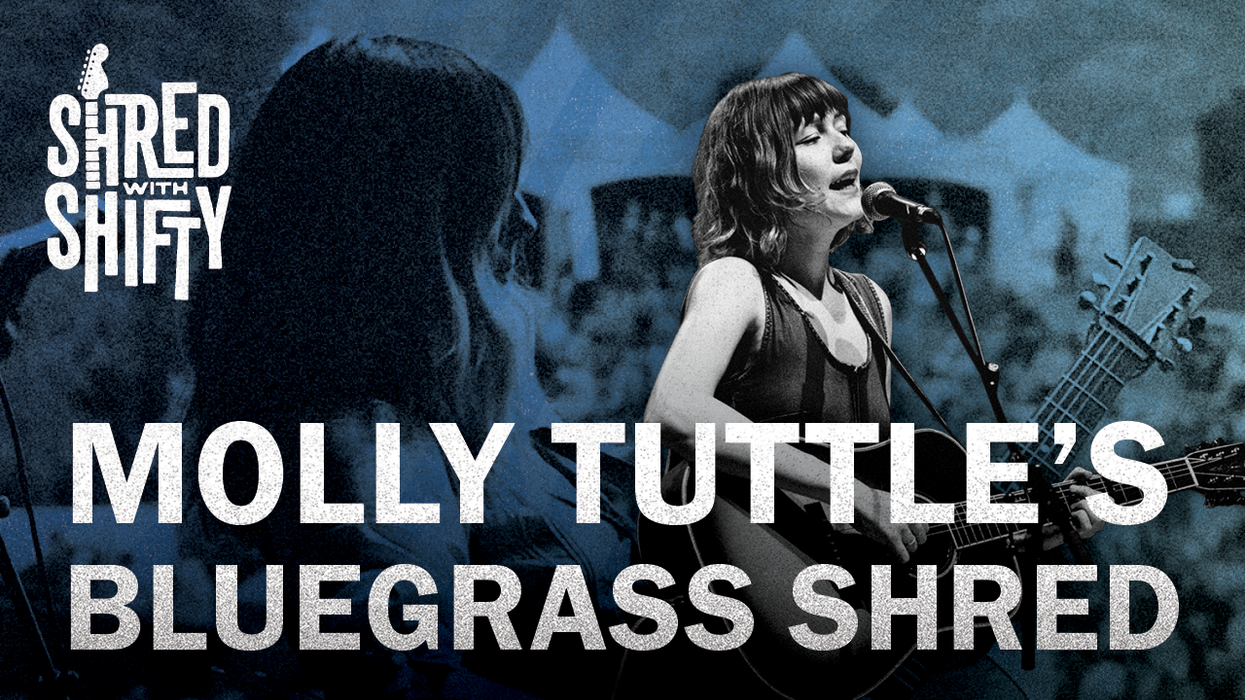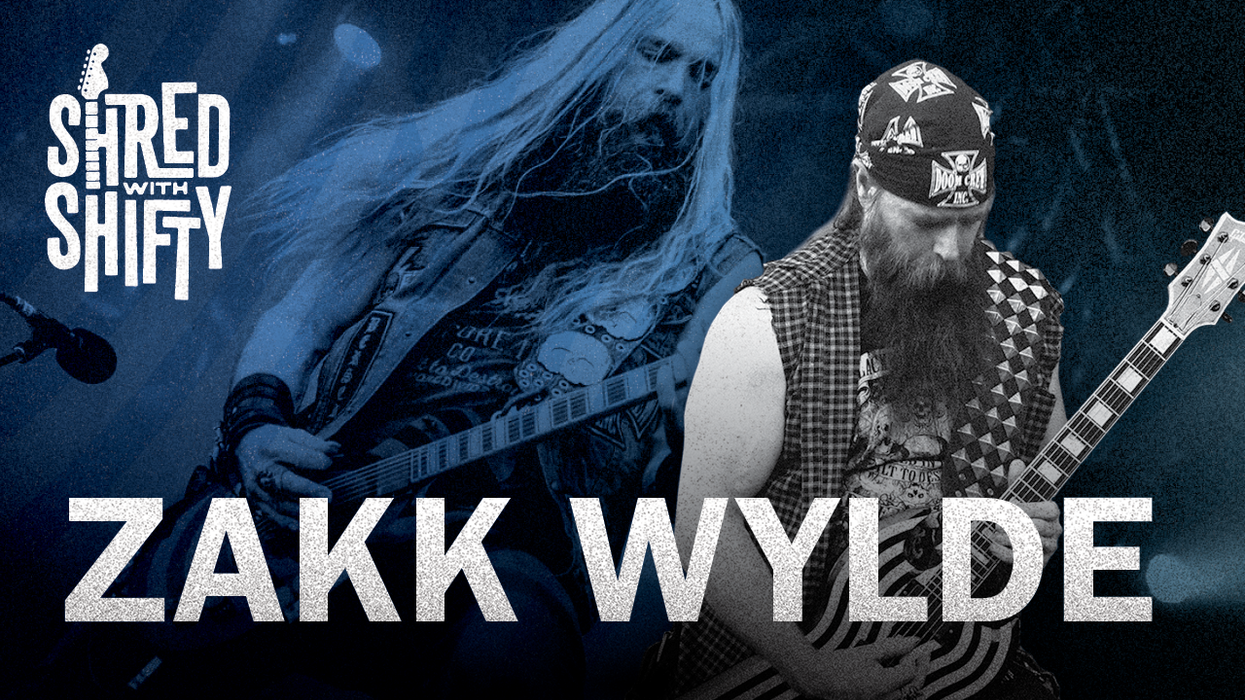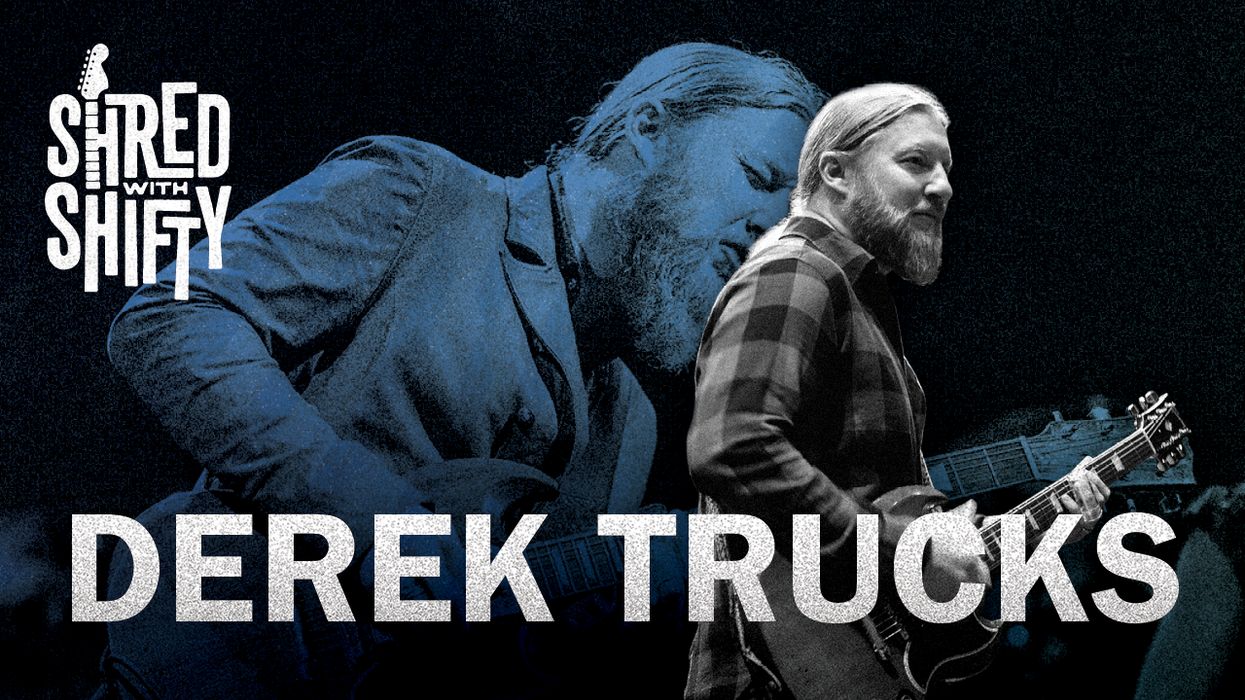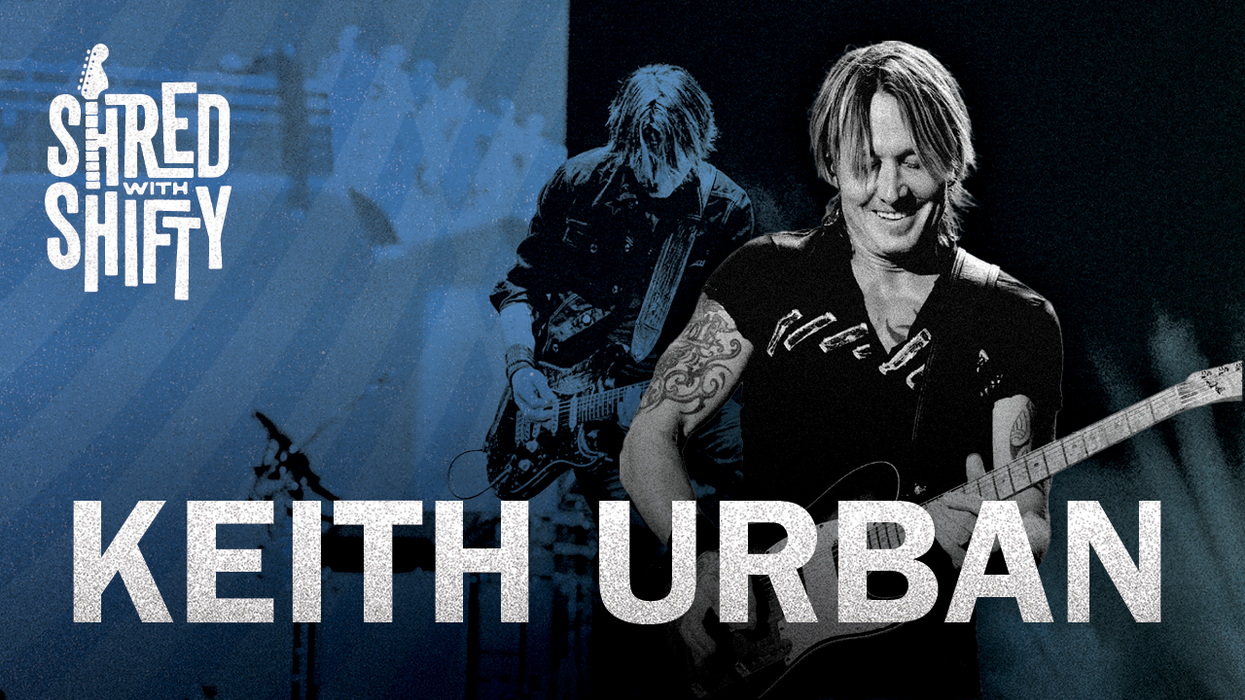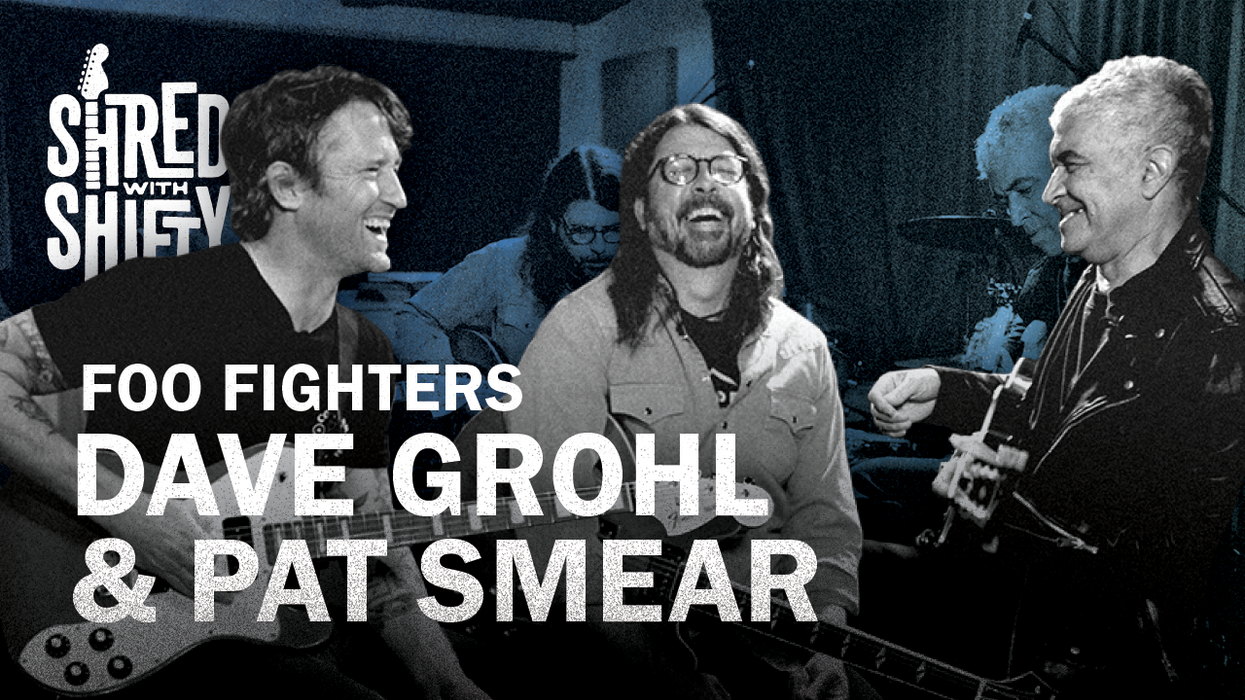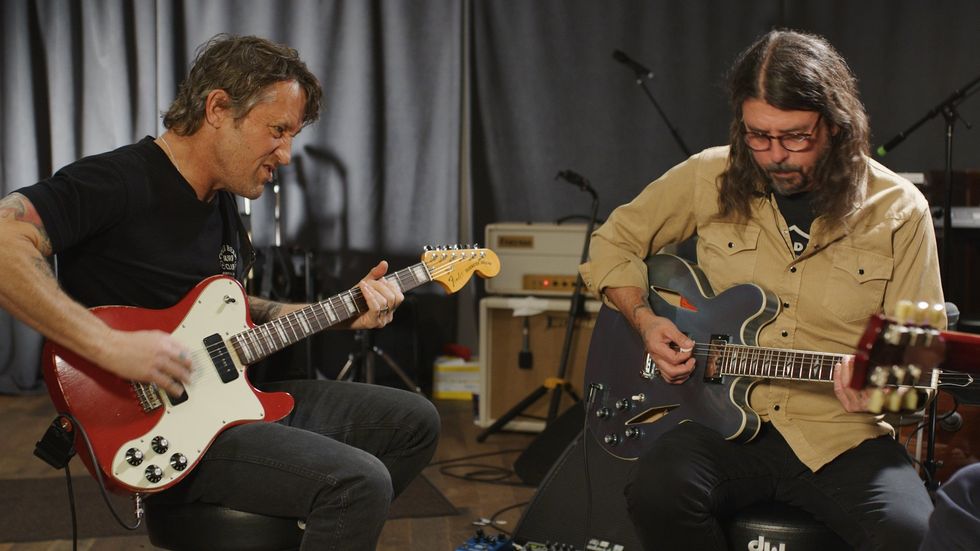The legendary German hard-rock guitarist deconstructs his expressive playing approach and recounts critical moments from his historic career.
This episode has three main ingredients: Shifty, Schenker, and shredding. What more do you need?
Chris Shiflett sits down with Michael Schenker, the German rock-guitar icon who helped launch his older brother Rudolf Schenker’s now-legendary band, Scorpions. Schenker was just 11 when he played his first gig with the band, and recorded on their debut LP, Lonesome Crow, when he was 16. He’s been playing a Gibson Flying V since those early days, so its only natural that both he and Shifty bust out the Vs for this occasion.
While gigging with Scorpions in Germany, Schenker met and was poached by British rockers UFO, with whom he recorded five studio records and one live release. (Schenker’s new record, released on September 20, celebrates this pivotal era with reworkings of the material from these albums with a cavalcade of high-profile guests like Axl Rose, Slash, Dee Snider, Adrian Vandenberg, and more.) On 1978’s Obsession, his last studio full-length with the band, Schenker cut the solo on “Only You Can Rock Me,” which Shifty thinks carries some of the greatest rock guitar tone of all time. Schenker details his approach to his other solos, but note-for-note recall isn’t always in the cards—he plays from a place of deep expression, which he says makes it difficult to replicate his leads.
Tune in to learn how the Flying V impacted Schenker’s vibrato, the German parallel to Page, Beck, and Clapton, and the twists and turns of his career from Scorpions, UFO, and MSG to brushes with the Rolling Stones.
Credits
Producer: Jason Shadrick
Executive Producers: Brady Sadler and Jake Brennan for Double Elvis
Engineering Support by Matt Tahaney and Matt Beaudion
Video Editor: Addison Sauvan
Graphic Design: Megan Pralle
Special thanks to Chris Peterson, Greg Nacron, and the entire Volume.com crew.
